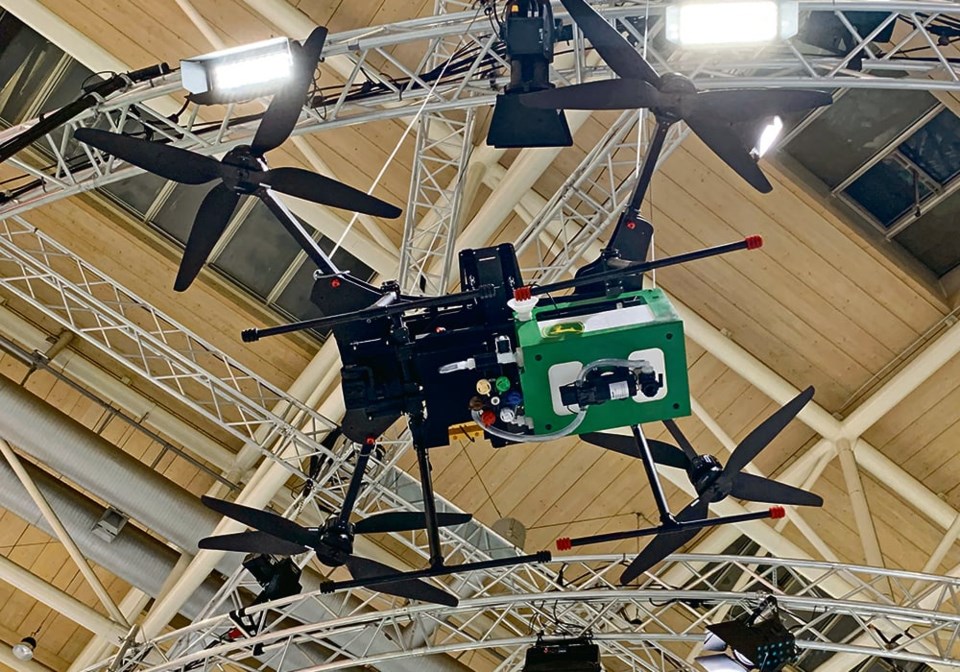WESTERN PRODUCER — Southeastern Alberta’s history in development of drone technology goes back two decades from developing automated ground vehicles for mine detection to unmanned aerial vehicles for the military developed at CFB Suffield.
However, the technology once reserved for those with deep pockets has gone mainstream, according to presenters at a drone industry conference in Medicine Hat.
That change is proving profound for agriculture, as drones on the farm appear poised to make a big impact as prices drop and capabilities increase.
For Markus Weber, owner of LandView Drones specializing in agricultural uses, spraying will see one of the biggest impacts of the technology.
However, there is a bump in the road.
“There is one big problem with the current paradigm, PMRA (Pest Management Regulatory Agency) doesn’t consider a drone an aircraft. It is for every other purpose in federal legislation,” he said. “Because of that decision saying that, the chemical manufacturers will need to apply label by label to have drones be approved for use on that label. That is where the time lag is going to come from.”
Drone use and licensing in Canada is under the purview of Transport Canada, which regulates the types of drones that can be used, who can operate them and the required certification for different air spaces.
When it comes to spraying, PMRA doesn’t treat drones, also known as unmanned aerial vehicles (UAVs), the same as a crop-dusting plane.
Weber said this is more because of an interpretation of the regulations by the regulatory agency rather than a specific code or law that prohibits using drones for spraying.
Chemical manufacturers are working to get certification for different products, but it will take time because each agent must go through the process separately.
“I suspect that process, label by label, will take one to three years per label. So, we are five to 10 years away from having a wide assortment of crop protection products available for drone application if those paradigms don’t change,” said Weber. “All that needs to change is PMRA accepts this is an aircraft and then all the other regulations will protect the public, protect food safety.”
He said continuing research is an important part of the process in developing the technology to improve understanding of the drift potential when applications are carried out by smaller multi-rotor aircraft.
One risk of not quickly advancing the approval process for drone sprayers is that farmers will buy drones with the capabilities to spray, which they are legally entitled to do, and follow the techniques developed by the agricultural sector in the United States.
“They are not likely going to admit publicly what they are doing but they are people that are seeing what is happening across the border in the U.S., adopting the best practices that are being espoused by the people who are using the same products, on the same crops south of the border and doing it anyway,” said Weber. “That will lead to a critical mass where enforcement will be a real challenge if they want to enforce their interpretation of the regulations in Canada. Compliance is going to be a real problem because there will be that many people spraying, that quickly.”
While some of the bigger promises of drone technology being integrated with other farm implements are still years away, the pressure by the ag sector to fully use what UAVs can do now will grow, said Weber.
“Farmers are going to buy a cheaper piece of hardware to apply the same product that they would otherwise be applying,” he said. “it’s a very economic decision.”

